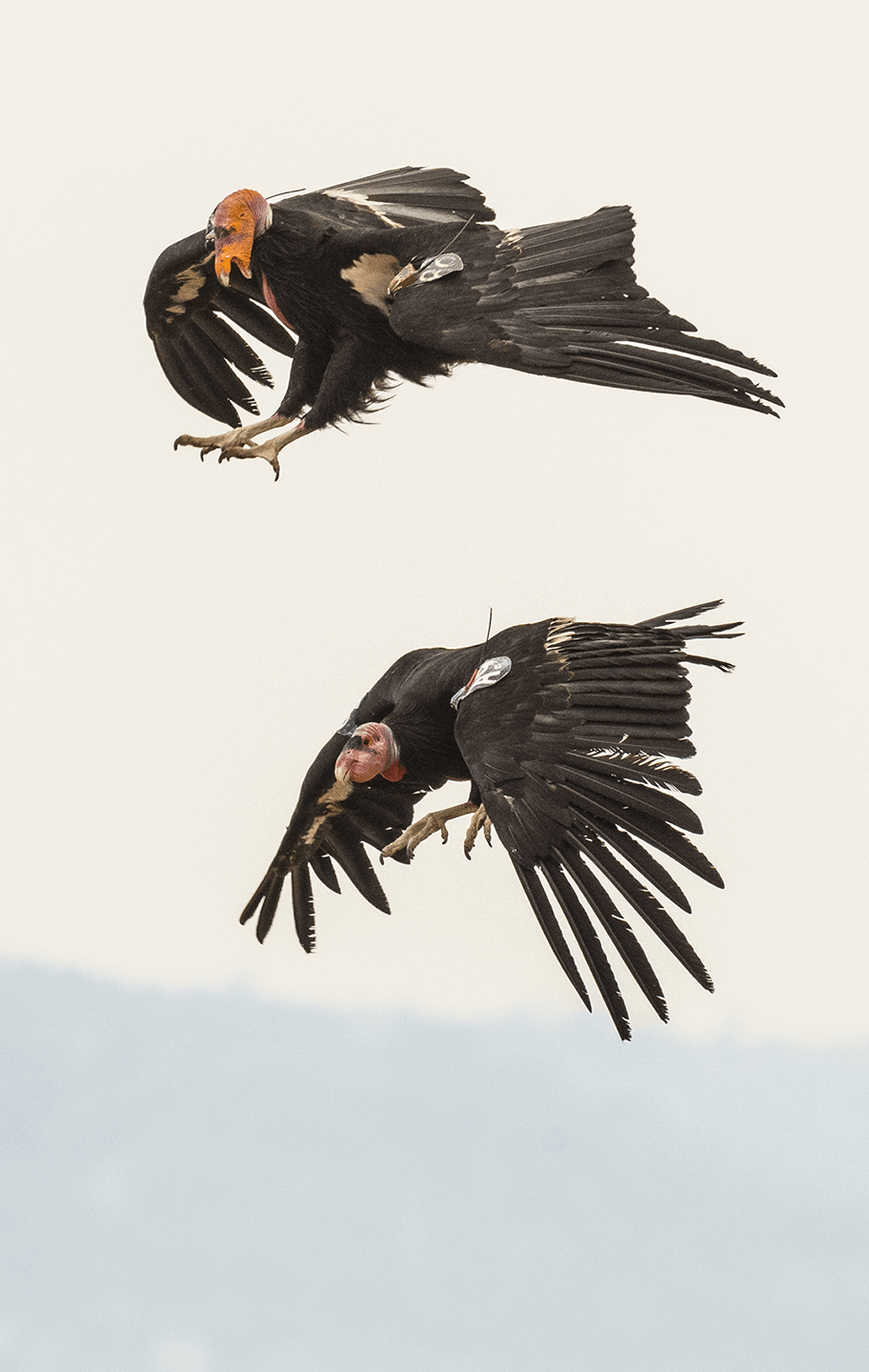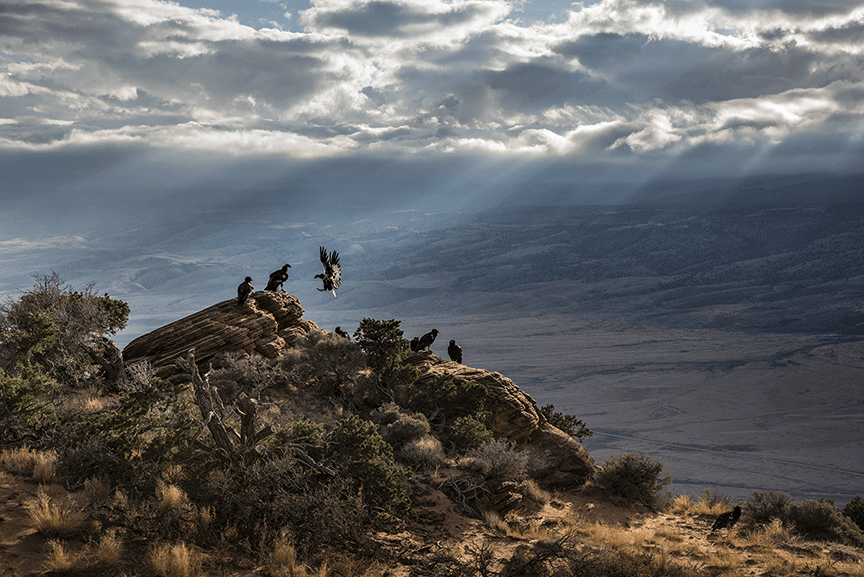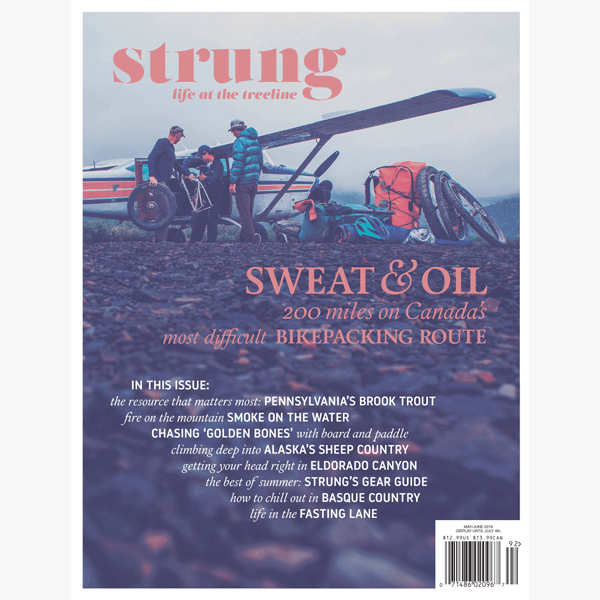On the Brink
by John ‘Verm’ Sherman
Originally published in the premier issue of Strung – December 2018
In 1982 there were 22 California Condors in the entire world. Extinction seemed imminent. By 1987 the last condor in the wild was trapped and entered into the captive breeding program. The current population hovers around 450 condors. Though still critically endangered, they have gone from the brink of extinction to the brink of survival. Still one obstacle stands in their way.
Lead poisoning is responsible for over half of diagnosed condor mortality. The source is lead-based ammunition residues in the form of bullet fragments, pellets and sometimes intact bullets unintentionally left in the discarded remains of animals the condors sometimes feed upon.
People who leave the remains of shot animals afield are at the heart of the problem. And today’s hunters are the core of the solution. A new wave of hunters is rediscovering and redefining hunting’s conservation ethic. Embracing the latest ammunition technology and unswayed by regressive dogma, these hunters may well become the heroes in this story.
Female Condor 297, hatched in 2003, stretches her left wing while perched on the South Rim of the Grand Canyon, Arizona. Condors have developed an ideal morphology for the messy work of scavenging carcasses. They bathe after eating and a bald head is easier to keep clean and healthy than a feathered head. The hooked beak easily rips through the toughest animal hides. Condors have a poor sense of smell (unlike Turkey Vultures) and use their exceptional eyesight to locate food and the presence of other scavengers and predators.
With a wingspan of 9.5 feet, California Condors are the largest landbird in North America. Adults can weigh from 18 to 26 pounds. Their feet are an enormous and sturdy platform, but lack the hooked talons and reverse toe of other raptors. Thus they can’t carry food with their feet; instead they use them to pin down carcasses while they rend meat off the skeletons with their heavy bills.
 Despite being the jumbo jet of the bird world, condors are excellent aviators and can fly up to 200 miles a day in search of food. Condor 349 takes evasive measures to avoid a dominant gesture from Condor 388. Aggression between condors usually only occurs during territorial defense around breeding season.
Despite being the jumbo jet of the bird world, condors are excellent aviators and can fly up to 200 miles a day in search of food. Condor 349 takes evasive measures to avoid a dominant gesture from Condor 388. Aggression between condors usually only occurs during territorial defense around breeding season.
 Condor 679’s blood tests showed high lead levels so she is being removed from the release pen and placed in a kennel for transport to the treatment facility.
Condor 679’s blood tests showed high lead levels so she is being removed from the release pen and placed in a kennel for transport to the treatment facility.
 A California Condor lands atop Vermillion Cliffs, AZ. At present, there are fewer than 500 California Condors in the entire world, of which over half live in the wild. The eight condors seen in this shot represent over ten percent of the Arizona-Utah group, one of the largest of the wild populations.
A California Condor lands atop Vermillion Cliffs, AZ. At present, there are fewer than 500 California Condors in the entire world, of which over half live in the wild. The eight condors seen in this shot represent over ten percent of the Arizona-Utah group, one of the largest of the wild populations.
In June of 2016, 337 staggered about the base of a thousand-foot tall cliff in Zion National Park. A shallow cave hundreds of feet above him contained his newly hatched offspring Condor 848. 337 could not reach his chick. He was dehydrated and emaciated, his chest muscles so wasted he could no longer fly. His digestive tract was full of food, yet he was starving to death. A few ingested bullet fragments were also in his GI tract, and the lead from these had paralyzed his digestive system. The food inside him started to rot. When biologists reached 337, he was still alive, but just barely. He was rushed to the treatment center, and administered EDTA injections in an effort to bind up the lead and pass it out of his system. It was too late to save him and he died the next day. His mate 409 worked diligently to raise 848 on her own, making foray after foray to satisfy the growing chick’s enormous appetite. Tragically, 848 perished a few weeks before it was due to fledge.
The solution to lead poisoning is simply for hunters, ranchers and anyone else who dispatches an animal with a firearm to use non-lead ammo instead of lead bullets. This prevents lead from entering the food chain where it doggedly persists, sickens, and sometimes kills. For instance, a rancher might euthanize an ailing steer with a lead-based bullet. Later a group of scavengers (eagles, coyotes, turkey vultures, ravens, condors, etc.) clean up the carcass. Because lead bullets tend to fragment while traveling through target animals, numerous scavengers might ingest lead fragments. Those that do can become sick and/or die and if their carcasses are scavenged the lead fragments can be consumed and kill again. Lead poisoning can sometimes be slow to debilitate, sicken or kill, so there’s always concern that if a parent condor ingests lead, it can be passed to the chick when they regurgitate food for the young one.
Hunters lucky enough to draw tags for the Kaibab Plateau receive coupons they can exchange for non-lead ammunition. For the past eleven years, 87% of drawn deer hunters on the Kaibab have participated in lead reduction efforts. Here, 15-year old Anna Parish, on her first deer hunt ever, chambers a non-lead round into her hunting rifle.
On the famed mule deer Mecca of the Kaibab Plateau, 15-year old Anna Parish and her dad pack out the bounty of her first ever deer hunt. Anna chose non-lead ammunition and dropped her deer with a single shot. The lead-free gut pile left behind provides a healthy snack for the condors.






